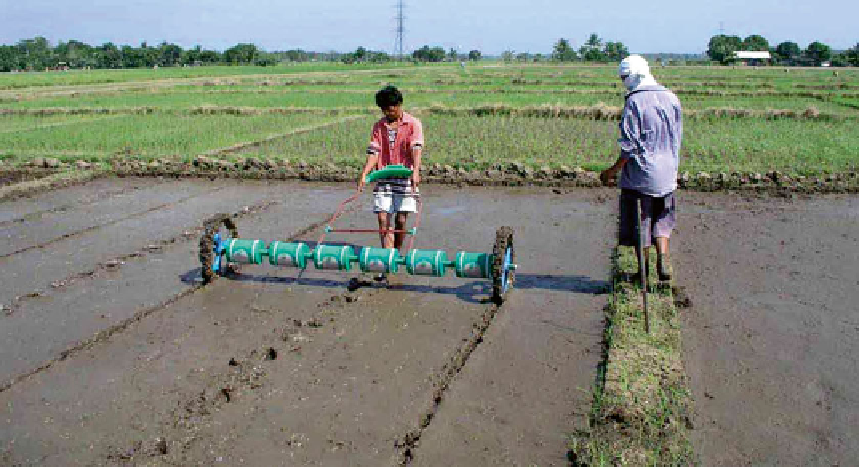Agriculture Reference
In-Depth Information
Following about a week after a herbicide applica-
tion, broadcasting of pre-germinated seeds into
the fl ood water is also done (Huang et al.
2012
).
Zero-till for paddy rice production is not
widely practiced. Zero-till with its more costly
machinery has become prevalent only in richer
countries whose farmers can afford equipment
like mechanical transplanters. However, use of
herbicides has enabled broadcasting of pre-
germinated seed, but lack of familiarity with
reduced tillage techniques is a major constraint
for small, poor farmers.
(i)
Advantages
• Less labor required.
• Farmers do not require as much time for
the preparation of the fi eld for the next
crop.
• As less time is required for fi eld prepara-
tion, water can be conserved or alternatively,
the plant growth period can be lengthened,
allowing the use of longer-season varieties
with higher yield potential.
(ii)
Disadvantages
• Rice cultivation under reduced tillage
makes it vulnerable to harmful pests such
as the stem borer which survive on the
unincorporated residue or stubble.
• Deploying new machinery for reduced
tillage and training to farmers is a long-
term endeavor and involves considerable
expenditure.
• Minimum tillage practices require
increased use of herbicides and are, there-
fore, less acceptable.
• Lower germination with reduced tillage
necessitates higher seeding rates and
therefore higher seed costs.
13.1.5.7 Direct Seeding
Pre-germinated seeds or seedlings are directly
planted in soil (Fig.
13.10
) or broadcast in fl ooded
fi eld under this technology.
Direct seeding of pre-germinated rice has
resulted in reduced methane emissions due to a
shorter fl ooding period and decreased soil distur-
bance compared to transplanting rice seedlings.
Ko and Kang (
2000
) demonstrated that in South
•
Methane mitigation through reduced till-
age provides protection of the soil and
improves its condition.
Fig. 13.10
Direct planting of pre-germinated paddy seeds in soil

Search WWH ::

Custom Search